Text
The Integration of Video Conferencing and Document Collaboration in Remote Courtroom Hearings

In recent years, the legal landscape has witnessed a transformative evolution with technology integration, specifically through video conferencing and document collaboration tools. This combination has revolutionized traditional courtroom proceedings, making them more accessible, efficient, and adaptable to the demands of the modern era. Moving beyond the confines of physical courtrooms, the convergence of video conferencing and document collaboration offers a dynamic platform for legal professionals to navigate cases seamlessly.
Accessibility and Inclusivity:
The integration of video conferencing in legal proceedings has broken down geographical barriers, enabling individuals to participate in court hearings from any location. The incorporation of document collaboration tools further enhances this increased accessibility. Attorneys, witnesses, and other stakeholders can collaboratively work on case-related documents in real time, irrespective of their physical location. This ensures that legal processes are not only accessible to a broader audience but also inclusive, accommodating individuals who may face challenges in attending traditional court sessions.
Efficiency and Cost-effectiveness:
The synergy between video conferencing and document collaboration enhances the efficiency of legal proceedings by streamlining processes. Traditional court hearings often involve significant document preparation, distribution, and review delays. With document collaboration tools seamlessly integrated into video conferencing systems, legal professionals can work on case materials concurrently, reducing the time and resources required for case preparation.
Moreover, the cost-effectiveness of this integrated approach is notable. Virtual courtrooms, empowered by video conferencing and document collaboration, eliminate the need for extensive travel, accommodation, and logistical arrangements. This accelerates legal processes and contributes to a more economically sustainable legal system.
Flexibility and Adaptability:
The flexibility inherent in video conferencing extends beyond mere virtual attendance to encompass real-time document collaboration. Legal professionals can collaboratively edit, comment, and review case documents, fostering a dynamic and adaptable legal environment. This flexibility proves invaluable in instances of unforeseen disruptions, allowing court proceedings to continue seamlessly even in challenging circumstances.
Additionally, the integration of document collaboration tools facilitates effective case management, enabling legal professionals to organize, update, and share case-related documents efficiently. This adaptability is particularly beneficial in reducing the backlog of cases and improving the overall efficiency of the legal system.
Challenges and Considerations:
As with any technological advancement, challenges and considerations must be addressed. Privacy concerns, cybersecurity risks, and the need for robust technological infrastructure are paramount in ensuring the integrity of remote courtroom hearings with document collaboration.
The convergence of video conferencing and document collaboration is reshaping the landscape of legal proceedings. By combining the accessibility and inclusivity of virtual courtrooms with the efficiency and adaptability of collaborative document tools, the legal system is entering a new era of innovation. As legal professionals continue to embrace and optimize these technologies, the transformation of courtroom processes will enhance efficiency and pave the way for a more accessible, inclusive, and technologically advanced legal landscape. The Palatine Technology CDCS (Court Document Collaboration System) provides state-of-the-art Video conferencing and Collaboration tools and forensic grade e-signature to conduct your court hearings, eliminates the physical boundaries, and saves time and money.
To schedule a demonstration of the CDCS application, please call us at 800-610-7897, or on our website www.palasys.com
Sources: https://palatinetechnology.blogspot.com/2023/11/the-integration-of-video-conferencing.html
0 notes
Text
Five Factors to Consider While Installing Video Arraignment Hearing Software in the Courtroom
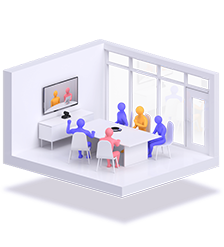
Be it for arraignments, preliminary hearings, or even bail hearings, the use of video arraignment hearing systems helps eliminate a lot of challenges for the courtroom. Although, like every system, even video arraignment hearing software may not be suitable for every hearing, it does share its benefits.
This blog will explore the best use of video arraignment hearing software.
Why use Virtual Court Systems
Video conferencing can help reduce the overflow of footfalls in crowded courtrooms. It can significantly reduce the cost of security personnel, managing prisoner’s travel, and using security forces in other areas. The system allows to speed up the processes that would otherwise take longer if every hearing needed to be done physically in the courtroom.
According to the district court statistics in Texas, more than 39,000 active cases are pending only in a single major county in Texas. Around 32% of cases are over 12 months old from this number. This is where serious discussions by the County Commissioners, judges, and law authorities are taking place to explore including three more district courts.
When the figure of just one county is increasing at such an alarming rate, the stats of other states in the US may also be facing a similar crunch. Therefore, the use of virtual Court hearing systems is necessary.
That said, even to introduce video conferences, the courtroom workstations, office spaces, meetings, and conference rooms should have appropriate spacing for accommodating them. In addition, all judicial chambers, conference rooms, and courtrooms should have proper access to video conferencing equipment.
Factors to consider in courtrooms with video arraignment hearing
While installing the video conferencing systems in a courtroom or in judicial chambers, it is important to make sure of the following factors:
The camera should be placed to cover the view of the judge, the defense attorney, and the prosecutor, including the defendant. The courtroom can be of a standard size as there are no restrictions or conditions regarding the size and area.
All individuals must be seen and able to view the video. This is why it is important to ensure sufficient lighting in the courtroom, with the proper exclusion of extra and unnecessary noises.
Arrangements should also be made for persons with disabilities, meaning all ADA requirements must be observed and implemented.
Now, installing the equipment will include cameras and a large-screen video monitor. This equipment will need to be installed in the courtroom and the jail. A small monitor and camera must be installed at the judge’s bench, court reporter station, and the attorney’s tables.
Once the video connection is established, all the parties should be able to have tools available to review, sign, and print the documents related to the case, such as electronic signature pads or touchscreen devices for signing.
Palatine Technology CDCS™ (Court Document Collaboration System) provides an efficient means for all parties in the case, including the inmates in the jail, Public defenders, prosecutors, and judges to collaborate in a real-time environment to Review, Sign, and print various case documents. Using the built-in application capabilities, these documents can be emailed to certain individuals at the judges' discretion or automatically upon completion of the court hearing.
Sources: https://palatinetechnology.blogspot.com/2023/10/five-factors-to-consider-while.html
0 notes
Text
Ethical Considerations in Blood Search Warrants

Blood search warrants allow authorities to obtain blood samples from individuals suspected of involvement in crimes. These warrants may help provide crucial evidence to support or refute allegations. However, the use of blood search warrants raises ethical concerns regarding privacy, consent, and the potential for misuse.
In this blog, we delve into the ethical implications surrounding the use of blood search warrants. We will also highlight the significance of balancing justice and individual rights in the criminal justice system.
Preserving Privacy and Consent
One of the primary ethical concerns associated with blood search warrants revolves around privacy rights. The Fourth Amendment of the United States Constitution protects individuals from unreasonable searches and seizures, emphasizing the importance of privacy in a democratic society. Executing a blood search warrant involves intruding upon a person's bodily integrity and extracting a sample without their explicit consent.
This intrusion must be justified by a compelling state interest, such as the investigation of serious crimes. However, it is crucial to ensure that the invasion of privacy is proportionate and necessary, respecting the dignity and autonomy of the individual involved.
The issue of consent further complicates the ethical landscape. Blood search warrants often bypass the need for an individual's consent, as they are granted by a judge based on probable cause. While consent is typically not required in such cases, it is essential to recognize the potential impact on an individual's sense of control over their own body. Striking a balance between the needs of law enforcement and the protection of individual rights becomes a crucial task in ensuring ethical practices.
Misuse and Safeguarding Against Abuse
Another significant ethical concern with blood search warrants lies in the potential for misuse or abuse. Law enforcement agencies must exercise caution and adhere to strict procedural requirements when obtaining and executing blood search warrants. Any misuse of these warrants can lead to the violation of individual rights and undermine public trust in the justice system.
To mitigate the risk of abuse, clear guidelines and oversight mechanisms should be in place. Transparency is vital to ensure accountability and prevent the misuse of blood search warrants. Regular training for law enforcement officers on the ethical implications and proper execution of blood search warrants can help minimize errors and protect against potential abuses.
Technological Advancements and Ethical Implications
Technological advancements in forensic science have enhanced the capabilities of blood analysis, allowing for more accurate and detailed examination of samples. While this progress can be beneficial in solving crimes, it also raises ethical concerns. With increased accuracy and sensitivity, blood analysis can reveal information related to the crime and personal and sensitive details about an individual's health, genetic makeup, or drug use. Safeguards must be in place to protect the privacy and confidentiality of such information, ensuring that it is used solely for its intended purpose in the criminal investigation.
Our anywhereWARRANT™ Management System makes it possible to produce a blood search warrant from anywhere. While these warrants play a crucial role in gathering evidence and solving crimes, their use must be guided by ethical principles.
Sources: https://palatinetechnology.blogspot.com/2023/09/ethical-considerations-in-blood-search.html
0 notes
Text
Ensuring Confidentiality and Security: Safeguarding Video Conferencing in Courtroom Proceedings

In an era of remote court proceedings, video court hearings have become essential for maintaining access to justice. However, ensuring the confidentiality and security of video conferencing in court cases is of utmost importance. This blog will delve into the significance of robust security measures and explore encryption protocols, access controls, and data protection strategies that safeguard video conferencing in courtroom proceedings.
Importance of Robust Security Measures
Video court hearings involve sensitive legal discussions, personal information, and confidential evidence. Implementing robust security measures is crucial to protect the confidentiality and integrity of these proceedings. By adopting appropriate security measures, courtrooms can mitigate the risk of unauthorized access, hacking, recording, and data breaches.
Encryption Protocols and Secure Communication
· Discuss the use of encryption protocols such as Secure Sockets Layer (SSL) or Transport Layer Security (TLS) to encrypt data transmitted during video court hearings.
· Explain how encryption ensures that only authorized parties can access the communication and prevents interception or tampering of data.
Access Controls and User Authentication
· Highlight the significance of implementing strong access controls to restrict video conference access to authorized individuals.
· Discuss the use of username/password authentication, two-factor authentication, or biometric authentication to ensure that only authorized users can join the video court hearing.
Data Protection Strategies
· Explore strategies to protect data during video court hearings, such as data anonymization or pseudonymization techniques.
· Discuss the importance of secure data storage, data retention policies, and regular data backups to prevent loss or unauthorized disclosure.
Addressing Concerns
· Despite the advantages of video court hearings, concerns about hacking, recording, and data breaches persist.
· It is essential to address these concerns to maintain trust and ensure the integrity of court proceedings.
Preventing Hacking and Unauthorized Access
· Discuss the importance of using secure and reliable video conferencing platforms that prioritize security features and undergo regular security audits.
· Highlight the need for strong passwords, secure Wi-Fi connections, and adherence to cybersecurity best practices by all participants involved in video court hearings.
Mitigating Recording and Data Breach Risks
· Address concerns about unauthorized recording by emphasizing the prohibition of recording without proper authorization or consent.
· Discuss the implementation of features like watermarks, restricted screen sharing, and participant consent notifications to deter unauthorized recording.
Maintaining Confidentiality and Privacy
· Emphasize the significance of secure communication channels, encrypted storage, and strict privacy policies to safeguard confidential information discussed during video court hearings.
· Address the importance of legal and ethical obligations to maintain confidentiality and privacy in virtual courtrooms.
Ensuring the confidentiality and security of video conferencing in court cases is vital for maintaining the integrity of legal proceedings. By adopting robust security measures, including encryption protocols, access controls, and data protection strategies, courts can mitigate risks and instill confidence in the remote justice system.
At Palatine Group, we have a video court hearing program called PalVid. It is an exceptional cloud-based video conferencing solution that delivers outstanding quality, security, and reliability. Designed specifically for court hearing applications, such as the Court Document Collaboration System (CDCS), PalVid Court ensures an immersive experience with high-definition video and crystal-clear audio.
Sources: https://palatinetechnology.blogspot.com/2023/07/ensuring-confidentiality-and-security.html
0 notes
Text
Using the Voice Over IP Technology to ensure seamless court video conferencing

At Palatine Technology, we ensure that our applications work smoothly. For this, we use the latest technology in our application PalVid with VoIP or Voice Over Internet Protocol Technology. In this blog, we will take you through how it works best for courtroom video conferencing.
What is VoIP and how does it work?
VOIP (Voice over Internet Protocol) is a technology that enables voice communication over the Internet. A VOIP application is software that utilizes this technology to allow users to make voice calls using an internet connection, rather than a traditional telephone line.
With a VOIP application, users can make voice calls using a variety of devices, such as smartphones, tablets, desktop computers, or specialized VOIP phones. The application converts the voice signal into digital packets and transmits them over the internet, where they are received by the recipient's device and converted back into an audible voice signal.
In addition to voice calls, many VOIP applications also offer features such as video conferencing, instant messaging, and file sharing. VOIP technology is widely used by businesses and individuals as an alternative to traditional telephone systems, as it can be more cost-effective and offer more features and flexibility.
How does VoIP help with courtroom video conferencing?
Many courtroom video conferencing systems utilize VoIP technology to enable high-quality audio and video communication between participants.
Using VoIP for courtroom video conferencing can offer several advantages over traditional telephone or ISDN lines. For example, it can be more cost-effective, offer higher quality audio and video, and provide more flexibility in terms of the devices that can be used to participate in the conference.
To use VoIP for courtroom video conferencing, participants would need to have the necessary equipment and software, such as a device with a camera and microphone and a video-conferencing application that supports VoIP. They would also need a reliable internet connection with sufficient bandwidth to support the video and audio traffic. Finally, security measures would need to be in place to ensure the confidentiality of the proceedings and prevent unauthorized access to the video conference.
How does PalVid work with VoIP?
PalVid is a software-based video conferencing application designed specifically for Law Enforcement and Judges. This VoIP (Voice over IP) application utilizes the latest video conferencing and compression technology to provide HD audio and video at a fraction of the cost of traditional hardware-based video conferencing solutions. PalVid can be used on any Windows PC, laptop, or Android device to connect to remote video locations.
With PalVid, Law Enforcement can obtain Arrest and Search Warrants from Judges remotely, using a patrol car or mobile command unit, and establish a communication link over video with command staff or use it as a remote interview tool. Additionally, designated users can record the video and audio sessions for future playback.
Contact Palatine sales to know more about using PalVid or our other products. We can recommend the right Palatine products suited to your courtroom requirements.
Sources: https://palatinetechnology.blogspot.com/2023/06/using-voice-over-ip-technology-to.html
0 notes
Text
Using the Voice Over IP Technology to ensure seamless court video conferencing

At Palatine Technology, we ensure that our applications work smoothly. For this, we use the latest technology in our application PalVid with VoIP or Voice Over Internet Protocol Technology. In this blog, we will take you through how it works best for courtroom video conferencing.
What is VoIP and how does it work?
VOIP (Voice over Internet Protocol) is a technology that enables voice communication over the Internet. A VOIP application is software that utilizes this technology to allow users to make voice calls using an internet connection, rather than a traditional telephone line.
With a VOIP application, users can make voice calls using a variety of devices, such as smartphones, tablets, desktop computers, or specialized VOIP phones. The application converts the voice signal into digital packets and transmits them over the internet, where they are received by the recipient's device and converted back into an audible voice signal.
In addition to voice calls, many VOIP applications also offer features such as video conferencing, instant messaging, and file sharing. VOIP technology is widely used by businesses and individuals as an alternative to traditional telephone systems, as it can be more cost-effective and offer more features and flexibility.
How does VoIP help with courtroom video conferencing?
Many courtroom video conferencing systems utilize VoIP technology to enable high-quality audio and video communication between participants.
Using VoIP for courtroom video conferencing can offer several advantages over traditional telephone or ISDN lines. For example, it can be more cost-effective, offer higher quality audio and video, and provide more flexibility in terms of the devices that can be used to participate in the conference.
To use VoIP for courtroom video conferencing, participants would need to have the necessary equipment and software, such as a device with a camera and microphone and a video-conferencing application that supports VoIP. They would also need a reliable internet connection with sufficient bandwidth to support the video and audio traffic. Finally, security measures would need to be in place to ensure the confidentiality of the proceedings and prevent unauthorized access to the video conference.
How does PalVid work with VoIP?
PalVid is a software-based video conferencing application designed specifically for Law Enforcement and Judges. This VoIP (Voice over IP) application utilizes the latest video conferencing and compression technology to provide HD audio and video at a fraction of the cost of traditional hardware-based video conferencing solutions. PalVid can be used on any Windows PC, laptop, or Android device to connect to remote video locations.
With PalVid, Law Enforcement can obtain Arrest and Search Warrants from Judges remotely, using a patrol car or mobile command unit, and establish a communication link over video with command staff or use it as a remote interview tool. Additionally, designated users can record the video and audio sessions for future playback.
Contact Palatine sales to know more about using PalVid or our other products. We can recommend the right Palatine products suited to your courtroom requirements.
Sources: https://palatinetechnology.blogspot.com/2023/06/using-voice-over-ip-technology-to.html
0 notes
Text
How courtroom video conferencing has impacted access to justice for marginalized communities
In recent years, courtroom video conferencing technology has been increasingly utilized in court proceedings as a way to increase efficiency, reduce costs, and provide greater access to justice. While there are many potential benefits to this technology, there are also concerns about its impact on marginalized communities. This holds true especially for those who lack reliable internet access or who may face challenges participating in remote court proceedings.

How is courtroom video conferencing helping marginalized communities?
One of the main ways in which video conferencing technology can impact access to justice for marginalized communities is through the digital divide. Many low-income individuals and communities lack reliable internet access or the necessary technology to participate in remote court proceedings. This can result in these individuals being effectively shut out of the legal system, as they are unable to participate in court proceedings or access legal resources online.
Furthermore, individuals with disabilities or who have limited mobility may also face challenges participating in remote court proceedings via video conferencing. For example, individuals who are deaf or hard of hearing may struggle with video conferencing technology that does not include closed captioning or other accommodations. In addition, those with limited mobility may face difficulties positioning themselves in front of a camera or using the technology itself.
Despite these challenges, video conferencing technology can also provide greater access to justice for some marginalized communities. For example, individuals who live in rural areas may have difficulty accessing legal services in person, but may be able to participate in court proceedings remotely via video conferencing. This can provide these individuals with greater access to justice and reduce the need for costly travel to attend court hearings.
The benefit in accessing of legal resources
Video conferencing technology can also provide greater access to legal resources for individuals who may face barriers to accessing legal information in person. For example, individuals who are incarcerated or who have limited mobility may be able to access legal information and resources via video conferencing technology, providing them with greater access to legal resources and support.
Overall, the impact of courtroom video conferencing on access to justice for marginalized communities is complex and multifaceted. While video conferencing technology can provide greater access to justice for some individuals, it can also create new barriers and challenges for others.
As the use of video conferencing technology continues to grow in the legal system, it is important for policymakers and stakeholders to carefully consider its impact on access to justice and take steps to ensure that marginalized communities are not left behind. This may include increasing funding for internet and technology access, providing accommodations for individuals with disabilities, and ensuring that video conferencing technology is implemented in a way that prioritizes access to justice for all individuals despite any limitations. If you wish to know more about video conferencing technology, PalVid Court can offer you high-quality and secure cloud-based conferencing. It has superior HD video and audio quality that is unmatched to any other software.
Sources:
https://palatinetechnology.blogspot.com/2023/03/how-courtroom-video-conferencing-has.html
#courtroom video conferencing#court video conferencing#video court hearing#video conference court hearing#video arraignment hearing#software court cases#court video conferencingBu
0 notes
Text
A Checklist Of Features For Opting a Video Conferencing Software
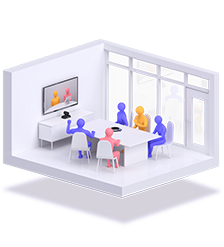
Palatine Technology Group is a great technical aid that provides Ecourt services like such as electronic warrants, First appearance Hearing, Bond hearing, for the courts. Here are a few checkpoints you can use before opting for the video conference software service.
Features checklist before opting a video conferencing software
Cost
Different video conferencing software has different cost structure for the services. The cost for services also varies based on the type of technology utilized for the video communication, number of hosts, number of participants, duration of the service requirement, service choice, etc. Most software offers basic services for free for initial usage and then charges for customizations or added services after the trial period. So, the cost per host plan would be different than a per participant plan or unlimited services plan.
Features
To identify the best software for, you need to first identify your needs. Certain courts find it important to have a recording feature for the conference software to save up important discussions. Some need a type of chatting option to be available during discussions to share opinions without interrupting the meeting. Screen sharing is another commonly required feature in many virtual meetings especially when discussions are required amongst remotely located parties.
Group size
Your group size is based on your interaction with the remote parties and requirements. Most of the video conference software will serve the purpose of a small groups with minimal participants for video conferences. But for large-size groups that have meeting participants in hundreds, specific software satisfying this requirement is necessary.
Support
Video conference software is prone to technical glitches. The functioning of the business cannot afford to halt abruptly, which is quite possible in case of technical glitches. Hence there should always be support available to fix the glitches at any given time. This support feature is mostly available as a paid feature of the software.
Usability
The user interface of the software should be lucid and easily accessible. In the case of complex software, there can be basic accessibility problems like switching on the audio or video, changing the background, adding participants, etc. This can be a huge problem in the case of sensitive video conferences like video court hearings. Hence usability is an important feature to look at.
Device compatibility
The main requirement of video conference software is to connect people seamlessly. If the software only functions in a particular device and does not support other device types, it would be a noticeable difference in inclusion. Even if the software is used only for internal meetings, device compatibility is essential to attend meetings on the go.
Integration with other applications
The application integration feature lets you import the existing documents or files from other applications on the device and present or utilize them in the conference software. If the integration feature is unavailable, these files will remain inaccessible for the meetings. Integration is required even for basic PowerPoint presentations and is a commonly required feature.
Palatine Technology Group's video court hearing system fulfills all these features in addition to providing great security.
Sources: https://palatinetechnology.blogspot.com/2023/01/a-checklist-of-features-for-opting.html
#video court hearing#Video Warrant#courtroom video conferencing#video arraignment hearing#video conference court hearing#Ewarrant
0 notes
Text
How to present yourself for a video court hearing?
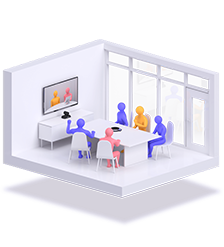
Video court hearings simulate the physical ones; hence, dressing up appropriately for the video court hearing is equally important. Here is a list that will help you with it.
Do not wear clothes with screen prints
Avoid wearing clothes with statements or symbols other than your work-associated brand logos. Any statement with a political association is sensitive, and you do not want the risk of that influencing the jury's or judge's decisions. Religious symbols are also a big no to court hearings.
These symbols or statements can also be provocative and take away your chance of receiving the benefit of the doubt. For example, if you are charged with a drink-and-drive offense and show up in the court hearing with a t-shirt that says 'beer and chill', it would be highly unprofessional and provocative.
Limit the jewelry
Limit the jewelry to a bare minimum for the court appearance. You can wear your ear studs and a watch to complete your look. Also, make sure that your studs or watch are not too shiny. It would be ideal not to wear ornaments to other visible piercings for the court.
Cover the tattoo
Tattoos aren't bad but tend to convey your beliefs or ideologies. Not that you're not entitled to showcase your beliefs, but you surely don't want to take the risk of your beliefs provoking the jury members and influencing the court hearing in any way. So, the ideal way is to cover up your explicit tattoos before attending video court hearings.
Avoid shiny clothes or party clothes
Shiny clothes or jitters are a big no for court appearances. Wearing party wear to your court hearing might convey the message that you are not taking the court session seriously.
Uniform or formal clothes work the best
You must have often heard this instruction that formal clothes are best for court appearances. But formal dress doesn't mean you should always be dressed in suits, trousers, or skirts. You should present yourself in court; the best way would be to present in your work clothes. You can attend your courtroom video conferencing wearing your work t-shirt with a badge or identification.
Wear shoes with closed toes
This is mostly applicable if your whole body is visible in the camera. Always wear shoes or footwear with closed toes to the court hearing. You may skip this point if your lower half of the body will not be seen on the screen.
Wear the right color
The most appropriate clothing color for your video court hearing is white. This is based on the psychology of colors, where white conveys calmness, honesty, and purity. You may also choose to wear other subtle colors of their light shade if not white. But colors like red are a big no. It might convey the wrong message to the judges and jury.
Palatine Technology Group is a great software solution that provides a platform for court services. PalVid by Palatine Technology Group is a superior-quality application for video conferencing specifically designed to assist the authorities.
Sources: https://palatinetechnology.blogspot.com/2022/11/how-to-present-yourself-for-video-court.html
https://www.bizbangboom.com/articles/three-essential-ecourt-services-you-should-know-about
https://techplanet.today/post/three-essential-ecourt-services-you-should-know-about
https://www.zupyak.com/p/3750594/t/three-essential-ecourt-services-you-should-know-about
https://www.pr4-articles.com/Articles-of-2020/three-essential-ecourt-services-you-should-know-about
https://penzu.com/public/0358c15d
https://www.otherarticles.com/computers/software/234720-three-essential-ecourt-services-you-should-know-about.html
https://coda.io/@palatine-technology/palatine-technology-group/three-essential-ecourt-services-you-should-know-about-12
https://justpaste.it/bk3aw
#video court hearing#court video conferencing#video conference court hearing#video arraignment hearing#software court cases#electronic warrants
0 notes
Text
Benefits of E-court services

When humans were forced to stay within the segregated boundaries of their homes during unpredictable circumstances, the judiciary was crippled due to accessibility hiccups. To adjudicate urgent matters and facilitate the judicial systems for implementing constitutional mandate, e-court services became the need of the hour to provide access to justice at all times without any hiccups. Legal sanctity has been given to video-conferencing and e-courts and here are the benefits of virtual courts.
Advantages of E-courts
It's like having the courthouse at your fingertips when you have the option to read and file from any location. What does the judiciary stand to gain with an e-court? Look over these particular advantages:
Attorneys, parties, and members of the public have instant access to all case information through the Internet, including the full text of all filed documents.
The case file can be seen concurrently by the parties, the judge, court personnel, and members of the public.
Up until the filing date, registered attorneys can submit case documents from their homes or offices without having to bother about postage, messengers, or traffic.
When lawyers file documents online, docket entries are automatically created, and when documents are filed, docket sheets are quickly updated.
Due to the accessibility of case documents from anywhere, at any time, clients and attorneys may be more responsive to their needs.
Immediately after the following filing, an automatic confirmation in the form of a "Notice of Electronic Filing" is delivered by email to the filer and case parties.
Because ECF document storage is automatic and secure, fewer paper documents need to be stored.
E-court services envisage the following:
Deliver citizen-centric services in an effective and timely manner as outlined by the law.
Create, set up, and use decision-support systems in courts
Automate procedures to ensure information is transparent and accessible to stakeholders.
Increase judicial productivity on both a qualitative and quantitative level to make the delivery of justice more accessible, predictable, cost-effective, and transparent.
The concept of Virtual Courts- A Big Step Ahead in Judiciary
The idea behind virtual courts is to have the case decided online without the need for litigants or attorneys to appear in court. A place where legal issues are decided upon, in the presence of qualified Judge(s), and which has a highly developed technical infrastructure is referred to as an "e-court" or "Electronic Court."
An online environment and an infrastructure with access to information and communication technology (ICT) are necessary for the operation of e-courts. The goal of e-Courts is to streamline and improve the use of the judicial system. Through numerous channels designed for service delivery, litigants can check the status of their cases online. Litigants can use e-Filing to submit their complaints and pay their court costs and fines online.
Conclusion
Gone are the days when courtrooms were confined within conventional boundaries. Now e-courts are the hype. They can develop and improve decision support systems in court while enhancing judicial productivity both quantitatively and qualitatively. This won’t just solve the accessibility issue, but also create predictable, cost-effective, transparent, and reliable judicial systems for the greater good.
Sources: https://palatinetechnology.blogspot.com/2022/10/benefits-of-e-court-services.html
https://medium.com/@palasys/palatine-technology-group-virtual-court-55247d38c8ef
https://losangeles.bubblelife.com/community/palatine_technology_group/library/3515709402/key/359683234/Palatine_Technology_Group_Virtual_Court
https://www.evernote.com/shard/s458/client/snv?isnewsnv=true¬eGuid=58d48e7a-363a-7114-2620-974503a71359¬eKey=VKsApDSAHSxQkkySSJFQWUMCSOeIvKxSjHwFmh-ppZ7vlHblxhR9AQcjqA&sn=https%3A%2F%2Fwww.evernote.com%2Fshard%2Fs458%2Fsh%2F58d48e7a-363a-7114-2620-974503a71359%2FVKsApDSAHSxQkkySSJFQWUMCSOeIvKxSjHwFmh-ppZ7vlHblxhR9AQcjqA&title=Palatine%2BTechnology%2BGroup%2BVirtual%2BCourt
https://palasys.nimbusweb.me/share/9072323/hvp12mla7sk6abdoi5fe
https://payhip.com/PalatineTechnologyGroup/blog/palasys/palatine-technology-group-virtual-court
https://freepressreleasedb.com/pr/Palatine-Technology-Group-Virtual-Court-PR296277/
https://www.prlog.org/12975249-palatine-technology-group-virtual-court.html
https://gab.com/palasys/posts/110756254908077448
https://dictanote.co/n/864469/
0 notes
Text
Video Court Hearing Software - Benefits, Features, Tips
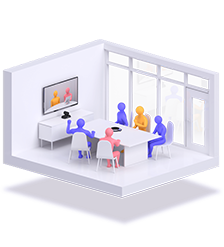
Some court proceedings need multiple participants to take part. It may not be possible for every individual to attend the court hearing. Therefore, the PalVid video court hearing software offers the provision of accommodating up to 300 participants in a multipoint conference over LAN or VPN network. The court allows for several hearings to take place each day, and the developments that take place most of them are overwhelming. Therefore, to make sure that the technical aspects of the hearings are not affected, it is important to provide only for the best technology. Creating an environment where there is less room for error is vital as court hearings demand communication to be clear and without interruptions. Therefore, the more you understand about PalVid, the better ways to leverage this software.
The significance of using PalVid as your video court hearing software
We’ve given an overview of what PalVid is, but to explain it comprehensively, we need to take you back to defining its features coupled with the benefits. PalVid Court hearing software is an efficient, high-quality, and secure cloud-based video conferencing service. It is offered by Palatine virtual court service and is designed to provide high-quality video conferencing with high definition video and audio quality for court hearing applications like CDCS (Court Document Collaboration system).
PalVid is an application that can be used for First appearance, First arraignment, or any procedure allowed by the state courts where the hearing is scheduled to be performed. This video court hearing software is specially designed such that no hardware is required. This software includes client applications for all popular platforms so that they can be integrated and used with any technical glitches or unsupportive formats.
Features of PalVid video court hearing software
The PalVid eCourt system utilizes SVC technology, which is based on the VP8 video codec. This guarantees state-of-the-art video quality on all devices and channels. PalVid eCourt system has a built-in AEC (Acoustic Echo Cancellation), AGC (Automatic Gain Control), and noise cancellation algorithm. These features ensure effective wide-band audio quality for all participants taking part in the proceedings. PalVid ecourt is designed to be compatible with popular USB Webcams and wide-angle cameras.
Tips to use PalVid video court hearing software
To facilitate an inmate’s family access to detention centers and court hearings, Palatine Technology provides a system for web broadcasting and live streaming of the virtual court. This way, the family can view the hearing remotely from any mobile devices or computers. PalVid is easy to use and offers a user-friendly set of features that are conveniently connected when needed.
We offer a free demo session to understand the various features of PalVid as a video court hearing software. If you need to get your team to learn more about this software system, our experts would be more than happy to provide a free demonstration of how it works. Connect with us online or call us to receive guidance based on your requirements.
Sources: https://palatinetechnology.blogspot.com/2022/08/video-court-hearing-software-benefits.html
https://palatinetechnology.blogspot.com/2023/07/ensuring-confidentiality-and-security.html
https://www.patreon.com/posts/86483867?pr=true
https://www.tumblr.com/palatinetechnologysblog/723547464409530368/ensuring-confidentiality-and-security?source=share
https://ecourtservices.wordpress.com/2023/07/22/ensuring-confidentiality-and-security-safeguarding-video-conferencing-in-courtroom-proceedings/
0 notes
Text
5 Benefits of Using anywhereWARRANT for Electronic Warrants

anywhereWARRANT is an electronic warrant management application by Palatine technologies. It helps in the easy functioning of electronic warrant procedures, from application to tracking and processing.
Why is an electronic warrant a vital part of the law enforcement system?
An electronic warrant or ewarrant is a digital way of applying and issuing warrants. Here is a list of why electronic warrants are important to the law enforcement system.
Reduces the paperwork and the hassles involved.
Makes the process faster and easier.
Since the electronic warrant is issued faster than the conventional process, law enforcement can make the arrest in a more timely fashion.
Important and time-sensitive searches like search warrants which cannot be performed in the absence of a warrant, or the compliance of the suspect, can be carried out at the right time with the help of electronic warrants.
With the high resiliency and the state-of-the-art advanced security, Palatine electronic warrants are a better option in most situations.
Following are the benefits of using anywhereWARRANT for electronic warrant:
Designed especially for mobile phones
anywhereWARRANT is specially designed to be compatible with mobile phones. The application is embedded with a bowser-enabled video conference system that permits the officer in charge to contact the judicial officers from the field. This allows sharing of the evidence in real-time. Since the warrant application can be applied remotely using mobile phones or tablets, it helps in saving time.
Tracking facility available
anywhereWARRANT application has a tracking feature that enables the officials to obtain the real-time status of the warrant. All the stages of the warrant process, from the application to the processing and final service, are updated in the application by visual, easy-to-view methods. This feature helps in better planning of the next steps more efficiently. This tracking facility is only enabled for designated officers, making it a secure and reliable option.
Permits printing of necessary documents
The application permits the printing of necessary documents in the desired locations. The detailed documents as per the requirement are shared in the respective. The printing application offers a strong audit function to keep track of the time, date, and individual who prints the documents.
Supreme security that protects your sensitive documents
anywhereWARRANT application has a two-factor authentication feature that only enables licensed officials to access the system. This ensures the safety of all sensitive documents. The application focuses the best on security with several levels of built-in security. The data is stored securely either in the cloud or in the centralized storage system of your choice. Despite the supreme security, it is easily accessible to authorized personnel.
Integrates with popular systems in the market
This electronic warrant application is reliable and easy to use. Also, compatible with popular law enforcement and judicial systems in the market. It integrates well with CMS and RMS systems to streamline the warrant process.
With the rising trend of online shift, coupled with the best features of anywhereWARRANT, this application by Palatine technology Group proves to be a great choice.
Sources: https://palatinetechnology.blogspot.com/2022/07/5-benefits-of-using-anywherewarrant-for.html
0 notes
Text
Software for Management of Court Cases
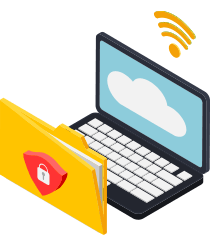
Maintaining documents is a vital part of any court case. From the preliminary phase until the case closure, documents are maintained at every stage. Maintaining all these documents in an efficient and accessible form just physically becomes a huge task. Court cases management software eases this process. Software court cases have digital documentation enabled and other features like remote access and additional security that save time.
What is court cases management software?
Court cases management software is a digital space that integrates various operations of a case. It provides a platform to work, store and access all the data pertaining to the case. The best advantage of this software is that it can be accessed remotely at any time while diminishing the hassle of paperwork.
How has the pandemic led to an increased use of ecourt services?
The pandemic affected almost all businesses that were devoid of automated tools. To a great extent, this affected legal services as well. The courts were closed temporarily, and the cases were postponed.
Though ecourt services began quite early, their applicability increased immensely during the pandemic. Similar to other sectors that switched to digital platforms to avoid discontinuity, legal services were made accessible more through ecourt services during the pandemic.
One of the ecourt services, legal management software, played a vital role in this digitization process. The following features of legal management software enable easy handling of documents:
Connects people and collaborates with work
The resources are made available to the right people executing the task, helping to connect the dots between their tasks. The data can be discussed and analyzed simultaneously, remotely, by different professionals working on the case using this software. Real-time updates can be provided too through this secure system.
Displays workflow
Digitization aims at increasing the work efficiency manifold. The workflow of all the cases being worked on in the organization can be viewed through mere clicks through this software. Since it provides an overview of the process, it is easy to identify the mistakes and intervene at an early stage. Also, this data is available to all the professionals working on the case, so everyone is on the same page.
Centralized Information
Since the data is available for all, this software minimizes data redundancy. It provides a platform where all the data can be stored, retrieved, and analyzed with precision.
CDCS by Palatine technology Group
Court Documents Collaboration System or CDCS by Palatine Technology Group provides a great platform for judges to perform the first hearing. It has an integrated video concerning the system, enabling the remote court hearing. The software, which is available only for government services, permits the hearing recording without any time limit.
CDCS is a cloud-based platform. Hence, it requires no additional hardware for the video storage. Since prisoners' transportation can be avoided, it increases security and minimizes the chances of escape.
Ecourt services are a great aid to the physical courts. It can function collaboratively to increase the efficiency of the service provided.
Sources: https://palatinetechnology.blogspot.com/2022/06/software-for-management-of-court-cases.html
0 notes
Text
How to Prepare For Video Conference Court Hearing Sessions
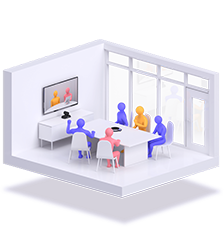
Video conference court hearings are one of the most comfortable developments in legal services. Despite all the pros, it can be challenging for those not acquainted with technology. In this blog, we’re here to help you prepare for the same, especially from a professional standpoint.
How to prepare for video conferencing hearing sessions
Although judges, prosecutors, and the legal team would be aware, it is highly likely that those attending for the first time may feel overwhelmed with the rules and regulations.
So that more emphasis can be directed towards the case rather than the periphery of necessary precautions, we’ve enlisted a short but quick guide to prepare for video conferencing sessions.
Keep in mind the following points for a smooth hearing process.
Mark the date and time of the hearing
To avoid any last-minute rush or panic, it would help if you mark the date and time of the hearing in your calendar or use a device notification app. Now that you have marked the date and time, check the device you plan to use for the court hearing.
Gather and keep all the essential documents required in the court in one place
Gather all the essential documents that you need to produce in the court session, including the identification cards, and place them in a single folder. This will help in accessing them easily at the time of the session.
Read and understand the instructions
While preparing for the court session, login to the official page and read all the instructions for a virtual court hearing, in case of doubts, clear them from your near ones or advocates to avoid any mistakes on the hearing day.
Select an appropriate spot in the house
This is to protect your privacy and the security of your dear ones.
These include:
1. Selecting a clear background
2. Avoiding the display of family photos within the frame
3. Choosing a room free of disturbances
Try muting your microphone when it's not your turn to talk to the court
Microphones are sensitive and hence can capture the noises in your area. Noises as trivial as paper turning or typing can be heard, which is disturbing. So make sure to mute your microphone immediately after you are done speaking to the court.
How PalVid Court can contribute to a more professional hearing
The quick guide provided above may seem like a basic set of reminders. However, these simple requirements are likely to be missed during crucial court hearing sessions.
That is why we offer the Video Conference Court Hearing with PalVid Court. This software is a great, high-quality, secure cloud-based video conferencing service. It is used for first appearance, first arraignment, or any procedures that state courts allow to conduct hearings. The program requires no hardware and can involve client applications for all common platforms.
To know more about how PalVid Court can be of use for video conferencing court hearings, get in touch with our expert advisors.
Sources: https://palatinetechnology.blogspot.com/2022/04/how-to-prepare-for-video-conference.html
0 notes
Link
Find the best court video conferencing services provided by Palatine Technology Group, and the application provide great wide-band audio quality for all participants. Visit today!
0 notes
Link
PalVid is the first Video Conferencing application, which provides HD audio/video. It is a high-quality, secure cloud-based video conferencing service offered by Palatine Technology Group. Get in touch today!
0 notes
Link
Enjoy high-quality audio & video conferencing with Palatine Technology Group. PalVid is the first Video Conferencing application, which provides HD audio/video at a fraction of cost in comparison with Hardware-based video conferencing solutions. Learn more at https://www.palasys.com/
0 notes